
 Flash News
Flash News
Berisha pritet me entuziazëm nga qytetarët në Pogradec
Korça volleyball team bus crashes, three girls end up in hospital
Pope Francis' funeral brings Trump and Zelenskyy together, here's what they talked about
Rain returns, temperatures drop, here's the weather forecast for today
Argument with hard objects at a residence in Lundë, one person is suspected of being injured
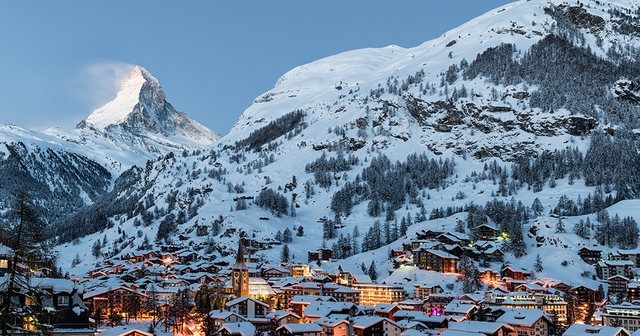
The Alps remain a prominent holiday destination, but climate change and mass tourism have taken their toll. Will tourism as we know it still be possible in the Alpine region?
Magnificent views, long mountain slopes, lonely peaks and snow-covered tranquility. The Alpine region of Europe is the ideal place for mountain tourism for many travelers in both summer and winter.
Increasingly, however, the Alps are becoming notorious for traffic jams, overcrowded villages and tourists who clog hiking trails and ski slopes. What were once idyllic alpine villages with unspoiled landscapes have been transformed into ugly concrete castles of mass accommodation.
Recently, the effects of climate change are compounding the problems of the Alps. "It can be clearly observed that warming in the Alpine region is progressing significantly faster than the global average," says Steffen Reich.
Head of conservation at the German Alpine Club, the world's largest organization of climbers and mountaineers with about 1.4 million members, Reich said longer and significantly hotter heat waves and less snowfall are causing glaciers to shrink. to melt faster and the permafrost to melt faster. At the same time, storms are increasing in strength and frequency, wiping out entire forests on the slopes of the mountains. As a result, soil erosion is worsening and may increase the risk of landslides and mudslides.
Tourism is the main economic supplier of the Alpine population, and reducing the annual flow of vacationers seems impossible. On the contrary, Reich said. He expects the region to become "even more popular with tourists" due to climate change because the mountainous region "will be cooler than the lower areas".
Ski resorts are particularly affected by climate change and need to adapt the most. The low snowfall and higher temperatures are already taking their toll, significantly increasing the bills for local communities to compensate for the lack of natural snow by technical means.
France, Mont-BlancPhoto: JEAN-PIERRE CLATOT/AFP
However, temperatures in the Alps are already rising above levels that render snowballs and other artificial snowmaking machines useless.
All this will change the face of tourism in the Alps, which is still the region with the most winter resorts globally.
Henriette Adolf e Komisionit Ndërkombëtar për Mbrojtjen e Alpeve (CIPRA) mendon se në të ardhmen, njerëzit nuk do të jenë më në gjendje të shijojnë "një varg prej shtatë ditësh skijimi alpin", por duhet të jenë mjaft fleksibël për t'u përfshirë në aktivitete më shumë në përputhje me "kushtet lokale" në pika të caktuara kohore.
Adolf sugjeron se skijimi në vend, i cili kërkon më pak borë, mund të bëhet një alternativë ndaj skive alpine dhe mendon se turistët do të duhet të mësohen të bëjnë pa borë në pjesën më të madhe të kohës. Ajo u bëri thirrje autoriteteve lokale të turizmit që të përgatiten për sezonet gjatë gjithë vitit që do të kërkonin riparimin e ashensorëve të skijimit, për shembull, për t'i vënë ato në dispozicion edhe për alpinistët.
Shëtitje në kushte problematike të klimës?
Pavarësisht rritjes së popullaritetit të ecjes dhe alpinizmit në Alpe, këto aktivitete po bëhen gjithashtu më të rrezikshme. "Veçanërisht për alpinistët në lartësi të mëdha, pasojat e ngrohjes globale dhe rreziqet e shtuara në zonat (ende) të akullnajave janë dramatike," shkroi Klubi Alpin Austriak në një buletin drejtuar anëtarëve të tij së fundmi.
Shkrirja graduale e permafrostit në lartësi mbi 2,400 metra përbën një problem të madh. Këto toka të ngrira përgjithmonë veprojnë në mënyrë efektive si ngjitës, duke mbajtur formacione të tëra shkëmbore. Shkrirja e tyre mund të shkaktojë rrëshqitje të rrezikshme të baltës, rrëshqitje të shkëmbinjve ose maleve të tëra.
Në qershor të këtij viti, një pjesë e majës së malit Fluchthorn në rajonin austriak të Tirolit u shemb, duke dërguar më shumë se një milion metra kub shkëmb, ekuivalent me rreth 120,000 ngarkesa kamionësh, duke u përplasur në luginën poshtë dhe duke shkaktuar rrëshqitje balte.
"Shtigjet e ecjes duhet të mbyllen përkohësisht ose të ndryshohen përgjithmonë për shkak të rrezikut të rrëshqitjeve të dheut dhe problemeve të ngjashme," tha Reich.
Gerhard Mössmer nga Klubi Austriak Alpin tha, se turistët nuk mund të mbështeteshin më në udhërrëfyes të printuar ose në harta analoge. Do ishte më mirë të merrnin informacionin e udhëtimit nga portalet e internetit ose drejtpërdrejt nga njerëzit në terren për të qenë më të sigurtë.
Problemet e lidhura me klimën në peizazhet alpine po rrisin presionin ndaj operatorëve të bujtinave dhe hoteleve në male për t'u përshtatur. Disa prej banesave, shpesh të operuara nga klubet alpine, duhej t'u përforcoheshin themelet për t'i bërë ballë erozionit të tokës. Për më tepër, uji po bëhet më i rrallë në verë.
"Po kursehet uji, po instalohen cisterna, po ndërtohen tualete që nuk kërkojnë ujë ose po pakësohen dushet”, tha Reich.
"Unë kam përjetuar gjithashtu situata ku uji ishte i racionuar, ose vetëm një sasi e kufizuar uji mund të merret për shëtitje," tha Henriette Adolf. "Ka bujtina që u detyruan ta mbyllin sezonin e tyre herët sepse u mbaroi uji."
Anët negative të suksesit
In addition to climate change, tourism in the Alps is facing a massive problem, with many holidaymakers flooding the region each year. Local populations are overwhelmed by the massive influx of tourists, many of whom come just to follow the latest trend on must-visit social media platforms like Instagram and Facebook.
The Italian region of South Tyrol, for example, has already limited the number of holiday beds. Regional councilor Arnold Schuler told US broadcaster CNN earlier this year that the popular resort had "reached the limit of our resources" as traffic problems abounded and local residents "struggled to find affordable housing".
Steffen Reich of the German Alpine Club believes that such drastic measures are not needed everywhere. "You have to understand exactly what the real problem is. Are the negative effects on the local population? Is it a threat to virgin life? Or is it primarily a park management problem?" Every problem, he said, would need its own specific solution./DW
Latest news




Berisha: Rama aq sa ka të gjatë trupin, ka dhe dorën për të vjedhur
2025-04-26 21:07:49
“Hajde të përballemi”, Berisha sfidon Ramën
2025-04-26 20:44:30

Berisha pritet me entuziazëm nga qytetarët në Pogradec
2025-04-26 20:02:38
Farewell, Pope Francis
2025-04-26 19:42:10

Eurodeputeti ‘shuplakë’ Ramës: Qeveria shqiptare nuk garanton zgjedhje të lira
2025-04-26 19:03:16
The woman, the portrait of the contrast of the two campaigns
2025-04-26 18:35:35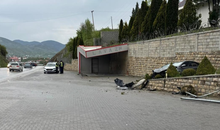



Who will succeed Pope Francis? Meet the 12 possible candidates
2025-04-26 17:21:47
LaCivita shares photo with Trump: Favorite photo of the "First Campaign"
2025-04-26 16:59:19
Convicted of assault, 39-year-old wanted man arrested in Greece
2025-04-26 16:34:21

Tirana Court reinstates Florian Sulejmani as head of AMP
2025-04-26 16:00:44
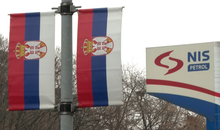
US extends sanctions on Serbian oil industry for third time
2025-04-26 15:19:40


The wolf does not vote.
2025-04-26 14:35:20





Korça volleyball team bus crashes, three girls end up in hospital
2025-04-26 12:46:30

Pope Francis' funeral, Vjosa Osmani meets President Trump before the ceremony
2025-04-26 12:04:26
Berisha: Rama's campaign is feminist in appearance, but misogynistic in essence
2025-04-26 11:47:47
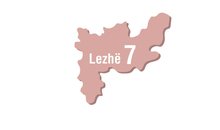

Mesila Doda underwent surgery at QSUT: They restored my faith in medicine
2025-04-26 10:54:09


Late-night brawl between cousins ends with two people in Fier hospital
2025-04-26 09:48:31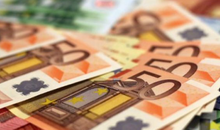
Foreign exchange, April 26, 2025
2025-04-26 09:23:29
US tariffs increase uncertainties for Albanian exporters
2025-04-26 09:08:40
Horoscope/ What do the stars predict for you today?
2025-04-26 08:48:58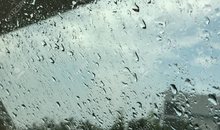
Rain returns, temperatures drop, here's the weather forecast for today
2025-04-26 08:29:54

Morning Post/ In 2 lines: What mattered yesterday in Albania
2025-04-26 07:56:56



The young man who was injured today in Farka is the son of the former DP MP
2025-04-25 21:52:26


Andres Pastrana: CDI stands strongly by the DP, has shown determination
2025-04-25 20:57:42
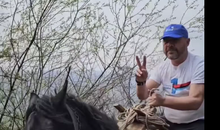





Berisha in Tirana: Benefits and subsidies for those returning to Albania
2025-04-25 19:32:44
Berisha: Albanians spend 4 times more on medicine than on bread
2025-04-25 19:19:58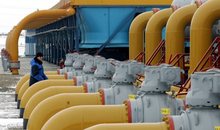
Russia and Iran strengthen ties with gas deal
2025-04-25 19:02:46
Video/ Disappointed miner burns his PS card
2025-04-25 18:45:02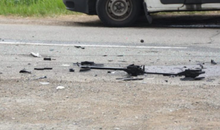
Accident in "Plepat e Kardhiqit", German hits pedestrian in Gjirokastra
2025-04-25 18:36:02
Begaj and Osmani pay homage near the body of Pope Francis in the Vatican
2025-04-25 18:17:28
He raped an OSHEE employee, a 38-year-old man is wanted in Tirana
2025-04-25 18:04:30


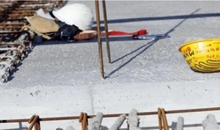
62-year-old man dies after falling from height while working in Golem
2025-04-25 17:15:29
Russian general killed in Moscow bomb blast
2025-04-25 16:58:28
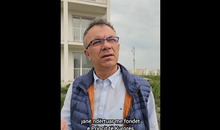

Tirana/ Drunk 22-year-old breaks equipment, father and son punch her
2025-04-25 16:20:12

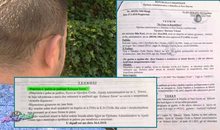

Meta: Pension increases will begin immediately with the vote for No. 1
2025-04-25 15:29:47
Trump: Crimea will stay with Russia, Zelenskyy knows this
2025-04-25 15:20:27
Silent deforestation from illegal logging, fires, mining and neglect
2025-04-25 15:11:12
New Moon challenges, opportunities for these two signs
2025-04-25 15:01:38
Accident on the Gjirokastër-Tepelena axis, German driver hits 38-year-old woman
2025-04-25 14:49:59
Improve eye health, 10 foods you should definitely add to your daily meals
2025-04-25 14:41:31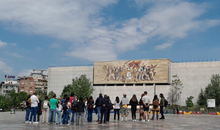
Tourism falters in March, foreigners fall by 2.7 percent
2025-04-25 14:31:59
Fiscal Peace in Albania: A Dangerous Deal with the Past
2025-04-25 14:24:48
Selling cannabis at Kombinat, 25-year-old arrested
2025-04-25 14:19:32

Rama's show with Vlora airport, will it end up abandoned like Kukësi?
2025-04-25 14:01:06

Arrested for stalking Dibra hospital director, house arrest for Irini Shehu
2025-04-25 13:41:48
Incidenti në Dibër, Berisha: Provokacion i ulët i bixhozgjiut Blendi Klosi
2025-04-25 13:32:40
Police officer arrested for driving ambulance while drunk in Vlora
2025-04-25 13:27:02

DP denounces the mayor of Maliq, Gëzim Topçiu, to SPAK
2025-04-25 12:55:50

Woman jumps from the eighth floor of the building in "Don Bosko"
2025-04-25 12:34:23

DP's program for medicine/ Alimehmeti: Healthcare needs urgent reforms
2025-04-25 12:20:11


